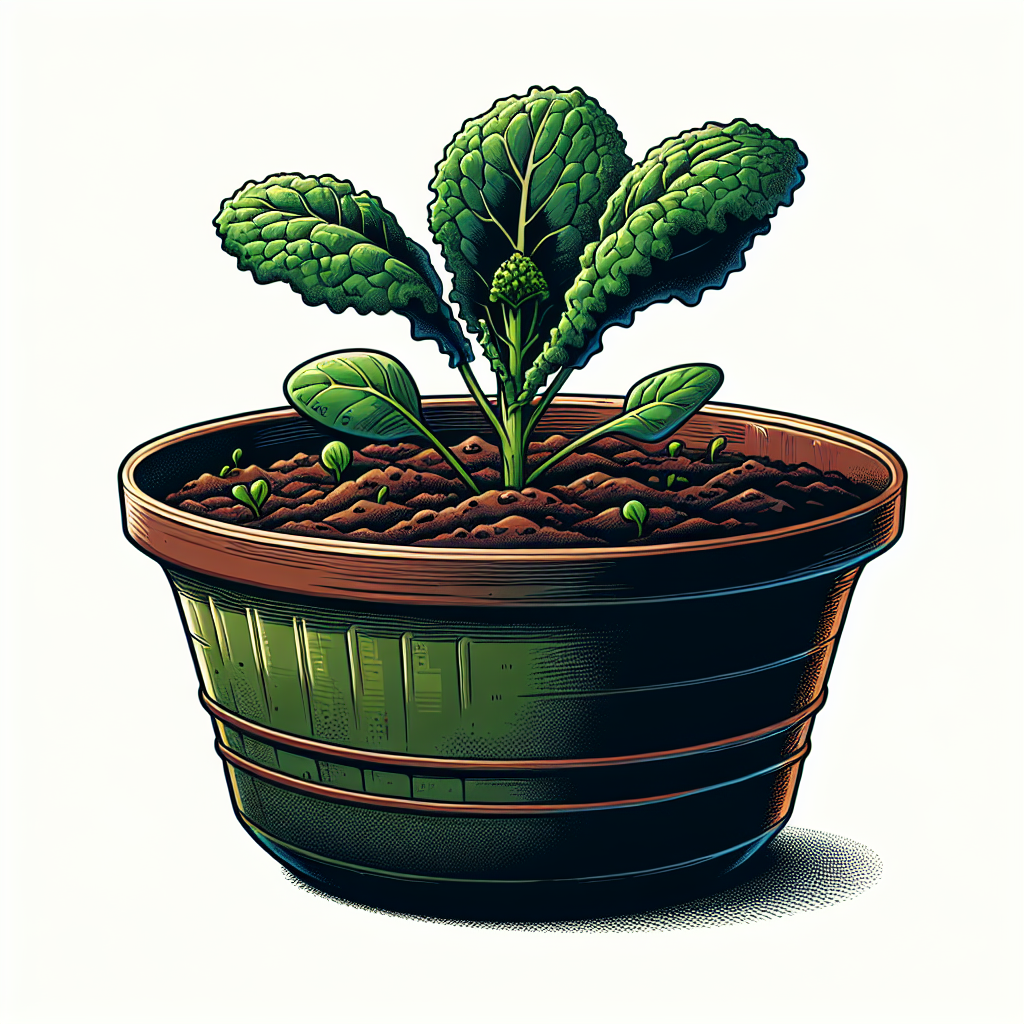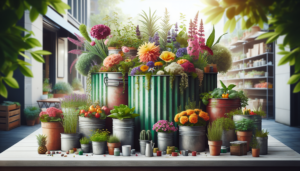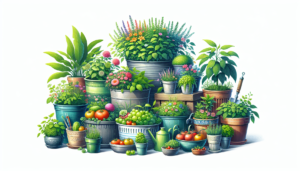
Container gardening of kales may have its challenges, but with these tips, you can overcome them. Learn how to choose the right containers, select the best kale varieties, prepare the soil, plant and care for your kales, and manage pests and diseases. Harvest fresh and nutritious kale right from your own container garden!
Are you interested in growing your own fresh and nutritious kale but don’t have a backyard or much space? Look no further! This article provides you with five essential tips for successful container gardening of kales. Discover how you can easily grow these leafy greens in small spaces, from choosing the right containers to ensuring proper sunlight and nutrition. With these expert tips, you’ll be able to enjoy a bountiful harvest of delicious and healthy kale right from your own balcony or windowsill.
Choosing the right container
When it comes to container gardening of kales, choosing the right container is essential for the success of your plants. Consider the size of the container first. Kale plants require space for their root systems to grow, so it’s important to choose a container that is large enough to accommodate their needs. Additionally, make sure the container has good drainage. Excess water can lead to root rot, so look for containers with drainage holes or consider adding your own. The depth of the container is also important. Kale plants have long roots, so opt for a container that provides enough depth for them to grow. Lastly, consider the material of the container. Plastic, ceramic, and clay containers are all viable options, so choose one that suits your aesthetic preferences and gardening needs. Finally, choose a container that fits the available space you have for gardening. Whether you have a small balcony or a spacious backyard, there are containers of different sizes and shapes that can fit your gardening space perfectly.
Selecting the right variety of kales
Once you have chosen the right container, it’s time to select the right variety of kales for your container garden. Researching different types of kale will help you understand their specific requirements and choose the variety that suits your needs. Consider the available space in your container. Some kale varieties, such as Dwarf Blue Curled and Scarlet, have compact growth habits that are suitable for smaller containers. On the other hand, larger containers will allow you to grow varieties like Lacinato or Red Russian, which have longer leaves. Additionally, choose a variety that suits your taste preferences. Whether you prefer a milder taste or a more robust flavor, there are kale varieties to satisfy your palate. To ensure the success of your container garden, select disease-resistant kale varieties. This will help minimize the risk of your plants succumbing to common kale diseases. Lastly, consider the growing season and weather conditions in your area. Some kale varieties are more suitable for cooler climates, while others can tolerate heat better.
Preparing the container and soil
Before planting your kale, it’s important to prepare the container and soil to provide a suitable environment for your plants to thrive. Start by cleaning the container thoroughly to remove any dirt or debris that may harbor pests or diseases. Proper drainage is crucial for container gardening, so ensure that your container has drainage holes or add some if necessary. This will prevent water from pooling at the bottom and potentially causing root rot. Next, choose a high-quality potting soil that is well-draining and rich in organic matter. This will provide the necessary nutrients for your kale plants to grow healthy and strong. Consider adding compost or organic matter to further improve the soil fertility and ensure optimal growth. If needed, you can also add slow-release fertilizers to provide a steady supply of nutrients to your plants throughout the growing season.
Planting kales in containers
Once you have prepared the container and soil, it’s time to plant your kales in containers. You have two options: starting seeds indoors or purchasing seedlings from a local nursery or garden center. If you choose to start seeds indoors, follow the instructions on the seed packet for the appropriate planting depth and spacing. If you opt for seedlings, make sure to choose healthy ones with a good root system. Follow the spacing guidelines for the variety you have chosen. This will prevent overcrowding, which can lead to competition for nutrients and inhibit proper growth. When planting the kale seedlings, make sure to plant them at the appropriate depth, leaving the crown of the plant at soil level. This will allow the plants to establish their root systems properly. Water the newly planted seedlings thoroughly to help them settle into their new environment. Consider using companion plants such as marigolds or nasturtiums to deter pests and attract beneficial insects that can help control pests naturally.
Caring for container-grown kales
To ensure the success of your container-grown kales, it’s important to provide them with adequate care. Kales require at least 6-8 hours of sunlight per day, so place your containers in a location where they can receive the required amount of sunlight. If you don’t have a spot with full sun, consider using grow lights to supplement the natural light. Water your container-grown kales regularly, keeping the soil consistently moist but not waterlogged. Monitor the soil moisture levels by sticking your finger about an inch into the soil. If it feels dry, it’s time to water. Applying organic mulch around the plants can help conserve moisture in the soil and suppress weed growth. Protect your kales from extreme temperature fluctuations and frost by bringing them indoors during cold spells or using protective coverings such as row covers or cloches.
Managing pests and diseases
Pests and diseases can pose challenges to your container-grown kales, but with proper management, you can minimize their impact. Inspect your plants regularly for signs of pests such as aphids or caterpillars. If you notice any pests, use organic pest control methods such as handpicking or spraying insecticidal soap. Controlling common kale pests will help prevent damage to your plants. Good sanitation practices can also help prevent diseases. Regularly remove any dead or decaying plant material from the containers. This will reduce the risk of fungal diseases and prevent the spread of pests. Choosing disease-resistant kale varieties can also be an effective way to minimize disease issues in your container garden.
Harvesting container-grown kales
The joy of container gardening of kales comes when it’s time to harvest your homegrown, fresh leaves. Monitor the growth and appearance of the leaves to determine when they are ready for harvest. Depending on the variety, the leaves may reach full size or desired tenderness within a few weeks to a couple of months. You have the option to harvest individual leaves as needed or harvest the whole plant by cutting it just above the central stem. This method allows for continuous regrowth and ensures a fresh supply of kale throughout the growing season. For a continuous harvest, leave some leaves on the plant so they can regrow and provide you with more harvests in the future.







